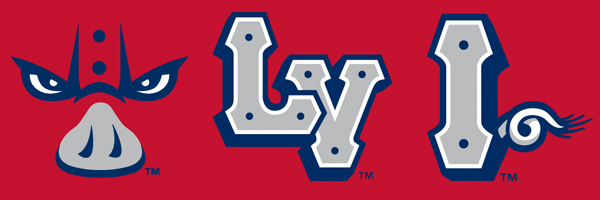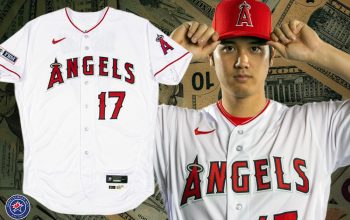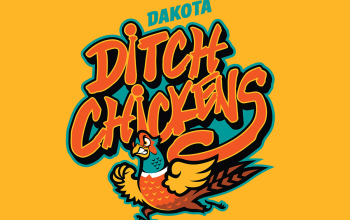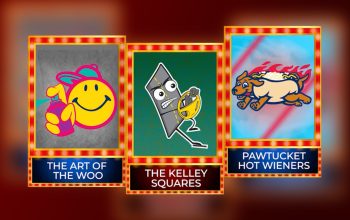One of the reasons many minor league baseball teams adopt wacky nicknames is that they want to emphasize the fun, family-friendly atmosphere of a game at their ballpark. As I’ve spoken with representatives from different teams for this series, it’s become clear to me that a lot of minor league baseball fans care more about the game experience—promotions and between-inning activities and whatnot—than they do the game itself. Regardless of how well the actual baseball team plays, a fun, unique logo creates a brand that people become attached to.
This is why one of the early challenges the Lehigh Valley IronPigs had to overcome was unusual.

“People here care more about baseball than your average minor league baseball fan,” said IronPigs Media Relations/Broadcasting Director Matt Provence, who has worked in minor league baseball for almost two decades. “They didn’t see the need to have this hokie, fun, state-of-the-art entertainment. They saw the need for baseball.”
The triple-A Lehigh Valley IronPigs’ nickname derives from a simple inversion of the phrase “pig iron,” which is forged in the steel mills of eastern Pennsylvania. The steel-themed logo perfectly represents the area’s gritty roots. (Awesome, true fact! The nickname was submitted to a name-the-team contest by a man named Ronald Steele.) However, Provence said, the team’s hometown of Allentown, Pennsylvania, is increasingly populated by transplants from New York and Philadelphia who might not be familiar with the area’s history, let alone mining terminology.
“It wasn’t like it was a slam dunk that everybody understood the play of words on pig iron,” he said.
Not only that, but some people just didn’t like the name. “Especially older people,” Provence said. “They thought it was gross. You know, pigs in your name. Ugh, how awful.”
 Fans have come to embrace the team and its porcine nickname, though. In fact, when I mentioned to Matt that my six-year-old daughter chose a pig snout from the team’s gift shop during a game last season, he exclaimed, “The number one seller in the store is the pig snout!”
Fans have come to embrace the team and its porcine nickname, though. In fact, when I mentioned to Matt that my six-year-old daughter chose a pig snout from the team’s gift shop during a game last season, he exclaimed, “The number one seller in the store is the pig snout!”
The IronPigs are among the best attended teams in the minors, ranking first, second, or third for several years running, and they have consistently been on Minor League Baseball’s list of top 25 teams in terms of merchandise sales. The year the IronPigs debuted in 2008, their big-league parent club, the nearby Philadelphia Phillies, won the World Series and the second of five consecutive National League East titles. Provence ties some of the IronPigs’ early success in merchandise and attendance to the Phillies’ run of success on the field (which, to be fair, has come to a crashing halt the last couple seasons). Baseball fans in the IronPigs’ hometown of Allentown, Pennsylvania, are likely to root for the Phillies, and are likely to want to see the team’s highest-level prospects.
“We’ve been blessed to be in this area because the sports fan in the northeast is a different bird, it’s a real diehard, it’s a real loyal fan, it’s a fan that cares,” Provence said. “When you’re always one or two in attendance, you’re usually going to sell more merchandise…. Everything was a perfect storm for baseball in this region, the Phillies fans, the brand-new ballpark, getting a triple-A classification from the get-go.”
The IronPigs have been known to push the envelope when it comes to edgy promotions. An in-urinal video game received international attention last year, and the team once famously gave fans “Number One” foam fingers sponsored by a local urologist. “You want everything wholesome and clean, maybe a little bit toward the extreme without going overboard,” Provence said. “It’s hard in 2014 to have one-of-a-kind, original entertainment.”
 Speaking of one of a kind, before this season, the IronPigs unveiled a series of new alternate logos, including a molten-lava pig face (to tie in with eastern Pennsylvania’s steel mills), a three-quarters angle pig face (just because), a Liberty Bell, (to tie in with Philadelphia), and one that is simply a strip of bacon (because everything is better with bacon)—complete with a scratch-n-sniff bacon T-shirt. The new logos complement the existing “Pork Racer” mascots, Hambone, a hot dog named Diggity, and Chris P. Bacon, pictured here.
Speaking of one of a kind, before this season, the IronPigs unveiled a series of new alternate logos, including a molten-lava pig face (to tie in with eastern Pennsylvania’s steel mills), a three-quarters angle pig face (just because), a Liberty Bell, (to tie in with Philadelphia), and one that is simply a strip of bacon (because everything is better with bacon)—complete with a scratch-n-sniff bacon T-shirt. The new logos complement the existing “Pork Racer” mascots, Hambone, a hot dog named Diggity, and Chris P. Bacon, pictured here.
The new logos and the IronPigs’ focus on all things porky drew the attention of the Washington DC-based Physicians Committee for Responsible Medicine (PCRM), which objected because bacon is horrible for you. They launched a campaign to encourage the IronPigs to “stop glorifying bacon,” including putting up a billboard outside the stadium saying, “Keep Kids Safe: Ban Bacon from Ballparks.” In response, the IronPigs wrote a response thanking the PCRM for their letter and all of its baseball metaphors (“Ban the bacon and hit a home run for health”), then launched a #saveourbacon social media campaign and rode a huge wave of free publicity generated by the story.
 After the unveiling, the designers at Brandiose posted sketches from the development the new logos, along with a request attributed to the IronPigs’ staff during the process: “We’d like to see more bacon.”
After the unveiling, the designers at Brandiose posted sketches from the development the new logos, along with a request attributed to the IronPigs’ staff during the process: “We’d like to see more bacon.”
As a triple-A team, the IronPigs’ roster often includes Major Leaguers on rehab assignments or who have been sent down to work out some kinks. Provence said that the big leaguers get a kick out of the wacky gear. When he asked members of the Phillies to shoot a commercial promoting IronPigs gear, they had fun with it. “Ryan Howard making noises of what he thought an IronPig would sound like was great footage,” he said.
 That said, in 2012, when then-IronPigs manager Ryne Sandberg had to sport a Christmas-themed uniform, he may have felt his career had bottomed out. Provence said, “Ryne Sandberg wearing a Santa Claus IronPigs shirt for Christmas in July was like, ‘Really? This is where it’s gone? From my Hall of Fame plaque to wearing Santa Claus?’” (Sandberg has since taken over as the Phillies manager, and is spared having to wear promotional gear like a tuxedo-themed uniform, which landed the IronPigs on the SportsCenter “Not Top 10.”)
That said, in 2012, when then-IronPigs manager Ryne Sandberg had to sport a Christmas-themed uniform, he may have felt his career had bottomed out. Provence said, “Ryne Sandberg wearing a Santa Claus IronPigs shirt for Christmas in July was like, ‘Really? This is where it’s gone? From my Hall of Fame plaque to wearing Santa Claus?’” (Sandberg has since taken over as the Phillies manager, and is spared having to wear promotional gear like a tuxedo-themed uniform, which landed the IronPigs on the SportsCenter “Not Top 10.”)
In the end, the IronPigs walked a fine line with their identity. They have the flexibility that all minor league teams need to appeal to families, especially kids, while also satisfying the serious Phillies fan who wants to see if his team’s prospects have what it takes to make it in the Bigs. They needed a logo that could be fun but edgy, that is appropriate to the region as well as appealing to a national audience, and that could somehow smell like bacon, and it seems that they’ve succeeded on all counts.















